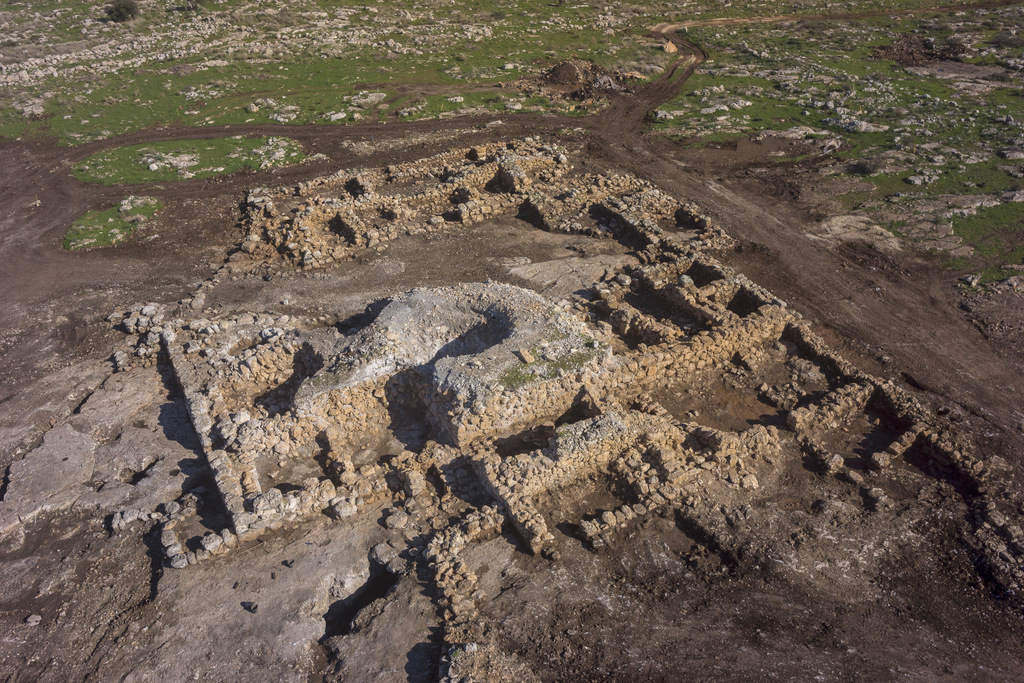Thursday, December 31, 2015
An Impressive Farmstead and an Ancient Monastery with Colorful Mosaics and Inscriptions were Recently Exposed in Rosh Ha-‘Ayin
Impressive archaeological finds are currently being uncovered in extensive excavations the Israel Antiquities Authority is carrying out in Rosh Ha-‘Ayin at the initiative of the Ministry of Construction and Housing and the Rosh Ha-‘Ayin municipality, prior to the building of new neighborhoods. So far scores of teenagers from preparatory programs and youth villages have participated in the excavation as part of the Israel Antiquities Authority policy of increasing public awareness of our cultural heritage.
During the excavation an impressive 2,700 year old farmhouse (30 × 50 meters) and a 1,500 year old church with colorful mosaics and inscriptions in it were uncovered.
According to Amit Shadman, excavation director on behalf of the Israel Antiquities Authority, “The large farmhouse was preserved to a height of more than two meters. The building is 2,700 years old and included twenty-four rooms constructed around a central courtyard. A large storage compartment (silo) meant to protect the grain was exposed in the courtyard. It seems that carbohydrates were as popular then as now, and the growing and processing of grain were fairly widespread in the rural-agricultural region. This was corroborated by other discoveries in the field that included numerous millstones which were used to grind the grain into flour. In addition, we found simple rock-hewn oil presses used in the production of olive oil”. Among the other artifacts that were exposed in the farmhouse remains were two silver coins from the fourth century BCE that bear the likenesses of the goddess Athena and the Athenian owl.
According to Shadman, this farmstead and other similar ones operated for centuries until the region was abandoned in Hellenistic period. Many hundreds of years later, during the fifth century CE, another settlement wave, this being one Christian, arrived in the area and changed the landscape. Among other things, the rapid spread of Christianity at that time is apparent as evidenced by the many impressive rural churches and monasteries that have been exposed.
A monastery dating to the Byzantine period was exposed on one of the hills in the area and included a church, an oil press, residential quarters and stables equipped with mangers and troughs, etc. The floors of the church that was built in the monastery were made of colorful mosaics that included geometric and other designs. In addition, a Greek inscription ascribed to a priest named Theodosius (a common name in the Byzantine period) was revealed in one of the mosaics – “This place was built under Theodosius the priest. Peace be with you when you come, peace be with you when you go, Amen”.
Hundreds of years after the monastery ceased to function a lime kiln was established there in the Ottoman period, which destroyed large parts of the monastery.
Given the impressive finds uncovered in the excavations, it was decided that the ancient remains will be conserved in situ, and will be displayed in the communal areas of the new neighborhoods that will be open for the benefit of the public.
Subscribe to:
Post Comments (Atom)

No comments:
Post a Comment